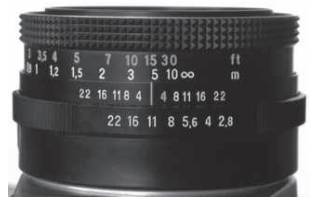The speed of a camera lens measures its ability to photograph in dim light. Speed is characterized
Question:
The speed of a camera lens measures its ability to photograph in dim light. Speed is characterized by f-ratio, also called the f-number, defined as the ratio of focal length f to lens diameter d. Thus an f/2.8 lens, for example, has diameter d = f/2.8. The actual amount of light a lens admits depends on its area A, but the inverse-square law shows that the light intensity at the camera?s imaging sensor is proportional to A/f 2. Most cameras have an adjustable iris that obscures part of the lens to change the f-ratio in response to available light. Point-and-shoot cameras adjust the f-ratio automatically, but serious photographers use their camera?s manual f-ratio adjustment (Fig. 31.37). Stopping down is the photographer?s term for reducing the lens area using the adjustable iris.
?
You?re given two lenses with different diameters. Knowing nothing else, you can conclude thata. the larger lens is faster.b. the smaller lens has the shorter focal length.c. the smaller lens suffers less spherical aberration.d. none of the above
Step by Step Answer:






